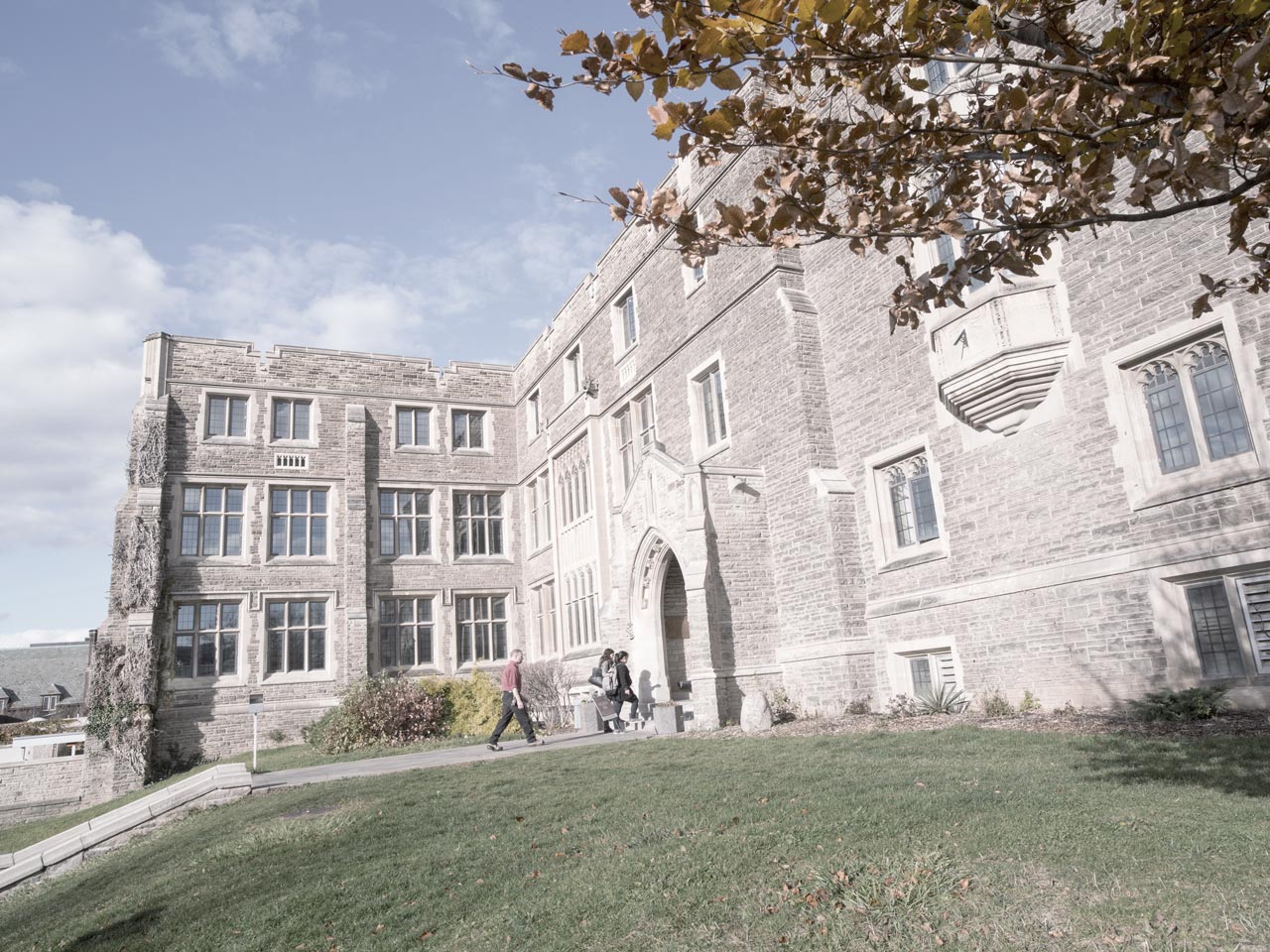Education

Challenges
-
Dispersed and aging technology infrastructure with complicated dialing plan
-
Migration of over 10,000 user licenses in 50+ buildings required
-
Faculty and staff averse to change
Value Created
-
Savings in the millions
-
Seamless multi-phase migration
-
Improved collaboration among staff
Solutions
-
Avaya Aura Communications Manager
-
Avaya Aura Session Manager
-
Avaya Aura System Manager
-
Presence; one-x Communicator Soft Client; Avaya 9611G (with customized McMaster logos)
-
Support Advantage Preferred
-
Upgrade Advantage
Cost-effective migration will seamlessly move more than 10,000 licensed users to the Avaya Aura® Platform
Consistently ranking as one of the top 100 post-secondary institutions in the world, McMaster University in Hamilton, Ontario, Canada was eager to modernize its communications infrastructure in order to increase collaboration between its nearly 8,000 faculty and staff.
With an aging communication infrastructure servicing over 50 buildings on its main campus and various off campus locations, along with two new off-campus facilities set to open prior to the 2014-15 school year, McMaster—a longtime Avaya customer—knew the potential cost of standing still. Instead, the university chose to move communications forward, green-lighting a multi-phase deployment to migrate 10,000 licensed users from old CS1000 platforms on to one unified Avaya Aura® Platform.
Increasing On-campus Collaboration
Scheduled to open both the Centre for Continuing Education and the David Braley Health Sciences Centre in 2015, McMaster University made it a priority to outfit its new off-campus, downtown locations with a state-of-the- art communications infrastructure.
The university envisioned its staff and faculty seamlessly communicating through a variety of devices, including smartphones, tablets, PCs, Macs, and conference room video systems. However, whatever platform it chose would have to work seamlessly with its on- and off-campus buildings, all of which were running on various end-of-life Nortel platforms, until users at each site were successfully migrated.
Making matters more complicated, the university was already in the midst of switching to a new administrative information system, so it was essential the migration have minimal impact on the day-to-day operations of faculty and staff who were already managing a significant amount of change. It was also vital that all 5-digit extension numbers stay the same, as the university operated on a coordinated dialing plan, which it shared with hospitals in the area.
An Education in Easy Migration with Millions in Savings
Normally, migrating thousands of staff to a modern Unified Communications & Collaboration (UCC) platform would cost millions upon millions of dollars - funding that a public research university like McMaster would be hard-pressed to find. However, thanks to Avaya’s Software Investment Protection Program, the university was able to move from old Nortel technology to a cutting-edge communications platform at a minimal cost.
“The opportunity to capitalize on our existing investments and migrate over 10,000 licenses to the Avaya Aura® Platform represented a significant savings for the university,” said Paula Brown-Hackett, Senior IT Manager-Enterprise Networks, McMaster University. “The amount of money we’re spending for the value we’re getting is incredible. Moving forward with Avaya was the ultimate no-brainer.”
Avaya clearly understands what it takes to efficiently transform a large university such as McMaster.
A Foundation for Future-proofed Communications
Laying the foundation for a unified communications infrastructure that would support different departments’ current and future IT environments, McMaster University embarked on a multi-phase plan that would see the Avaya Aura platform installed in its two new buildings immediately, with users at more than 50 facilities being migrated on to the technology systematically over a number of years. Since Avaya’s state-of-the-art technology is fully compatible with the outdated CS1000M systems still running in many of the university’s facilities, McMaster is now executing this phased, step-by-step implementation with no downtime or negative impact on staff. Currently in an environment where 1,100 users have been migrated on to the Avaya Aura platform—while thousands more wait for their turn—faculty and staff in buildings on- and off-campus are now communicating and collaborating harmoniously, without ever knowing what platform they’re on.
“From an end-user perspective, the compatibility is really amazing,” added Brown-Hackett. “We now have a functional dialing plan between all systems, and every staff member was able to keep their same extension. The flexibility and adaptability of the Avaya Aura Platform has also allowed us to move users at our own pace. We’re able to conduct tests with pilot groups to ensure everything is running smoothly before fully migrating staff members over.”
All of McMaster’s past and planned installations of the Avaya Aura platform include Avaya Aura Communications Manager, Session Manager, and System Manager. The foundation of the core architecture, Session Manager, supports the SIP architecture and makes it possible to manage users and multimedia communications across both Avaya and third-party communications systems. Avaya Aura System Manager is a web-based management console for provisioning, user administration, dial plan management, routing policies, security and fault/ performance monitoring, and licensing.
Increased Collaboration at a Reduced Cost
Since implementing an open, flexible, standards-based communications platform that can scale across multiple locations while working seamlessly with existing campus applications, many of McMaster’s faculty and staff members have been freed from their office desks.
With a softphone loaded on their desktops and laptops, they now have the ability to work from anywhere while still being easily accessible to their colleagues and students. “We had a few faculties who were eager to move ahead of schedule because Avaya’s technology fit their business plan,” explained Brown-Hackett. “By giving staff the freedom to work remotely, these departments have been able to reduce their footprint on campus and realize significant savings.”
In addition to lowering infrastructure costs and increasing network efficiency, McMaster hopes the unified communications platform will help the university better serve its student population in the near future. Once more faculty members are migrated on to the new technology, professors and teaching assistants will no longer have to be in their office to receive calls on their extension or to retrieve a voicemail, allowing students to reach them at any time.

The flexibility and adaptability of the Avaya Aura Platform has also allowed us to move users at our own pace. We’re able to conduct tests with pilot groups to ensure everything is running smoothly before fully migrating staff members over.
“We’re really excited, not only because of the new features we’ve been able to take advantage of immediately, such as mobility, but also because Aura lays the foundation for us to explore new ways to collaborate and provide more quality experiences for both students and staff,” said John P. Kearney, Chief Information Officer, McMaster University.
Improving collaboration among students, faculty, and multi-institution teams is why universities across North America are turning to the Avaya Aura Platform. In an on demand world where students are used to doing everything online and on their smartphones, it’s important that universities expand their campus contact centre services to support students across multiple communication channels (chat, SMS and email) and enhance the user experience.

Swapping Success Stories - International Avaya Users Group
Paula Brown-Hackett is the Vice President of the International Avaya Users Group (IAUG), which at 5,200 members strong, combines the previous Avaya and heritage Nortel user groups into one of the world’s largest international organizations for communications technology professionals.
As the forum for the global Avaya customer community, the IAUG is a one-of-a-kind community designed to give members unparalleled access to industry leaders, Avaya experts, and networking with peers that face similar challenges.
It’s a place to share ideas and solve common problems; all while advancing the community’s collective knowledge and directly influencing Avaya product development.
Having seen firsthand how cost effective and seamless it was to move thousands of user licenses from CS1000 to the Avaya Aura Platform, Brown-Hackett was more than pleased to give a detailed presentation on the McMaster migration to the IAUG’s Toronto chapter.
“Being an IAUG member offers an excellent opportunity to share your knowledge and experience while networking with other Avaya users around the world,” said Brown-Hackett. “As a longtime member, I would highly recommend others to join.”

About McMaster University
McMaster University is ranked in the top 100 universities in the world. Our researchers and 30,000 students tackle the challenges of today and are helping to build a future of opportunity.
Related Success Stories
Government
State of Montana improves UC service to better protect and serve

Resources
Services & Support
© 2025 Avaya LLC

